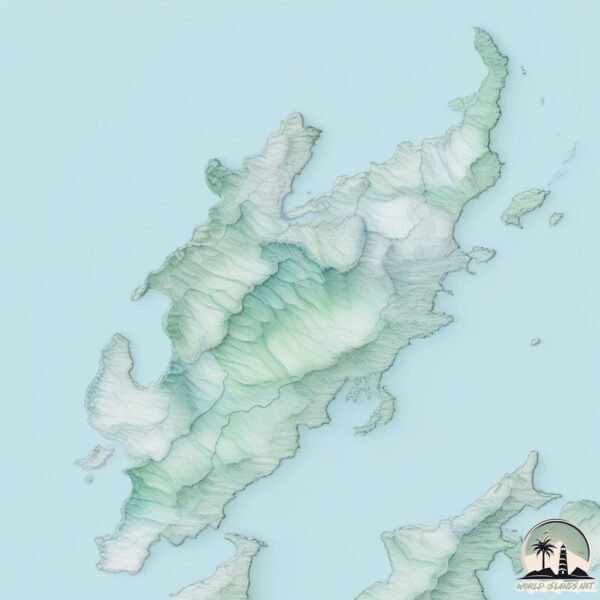D'Urville

Welcome to D’Urville, a Temperate island in the Tasman Sea, part of the majestic Pacific Ocean. This guide offers a comprehensive overview of what makes D’Urville unique – from its geography and climate to its population, infrastructure, and beyond. Dive into the details:
- Geography and Size: Explore the island’s size and location.
- Climate and Weather: Weather patterns and temperature.
- Topography and Nature: Uncover the natural wonders of the island.
- Infrastructure and Travelling: Insights on reaching, staying, and making the most of your visit.
- News and Headlines: Latest News.
Geography and size of D’Urville
Size: 169.8 km²
Coastline: 260.5 km
Ocean: Pacific Ocean
Sea: Tasman Sea
Continent: Oceania
D’Urville is a Large Island spanning 170 km² with a coastline of 261 km.
Archipel: Polynesia – A region of more than 1,000 islands in the central and southern Pacific Ocean, known for their diverse Polynesian cultures, stunning landscapes, and marine biodiversity.
Tectonic Plate: Australia – A major tectonic plate covering Australia, New Zealand, and parts of the Indian and Pacific Oceans, known for its relative stability and occasional seismic activity.
The geographic heart of the island is pinpointed at these coordinates:
Latitude: -40.82627109 / Longitude: 173.86159638
Climate and weather of D’Urville
Climate Zone: Temperate
Climate Details: Temperate Oceanic Climate
Temperature: Warm Summer
Climate Characteristics: Known for its moderate year-round temperatures with ample rainfall and no dry season. Warm summers are characteristic.
Topography and nature of D’Urville
Timezone: UTC+12:00
Timezone places: Pacific/Auckland
Max. Elevation: 573 m
Mean Elevation: 191 m
Vegetation: Evergreen Needleleaf Forest
Tree Coverage: 92%
The mean elevation is 191 m. The highest elevation on the island reaches approximately 573 meters above sea level. The island is characterized by Plateau: Elevated flatlands rising sharply above the surrounding area, with a maximum elevation over 500 meters but a mean elevation less than 300 meters, forming unique highland areas on islands.
Dominating Vegetation: Evergreen Needleleaf Forest
Dominated by evergreen coniferous trees such as pines and firs, which retain their needle-like leaves throughout the year. These forests are often found in cooler climates. D’Urville has a tree cover of 92 %.
Vegetation: 7 vegetation zones – Very Highly Diverse Island
Islands in this range are ecological powerhouses, showcasing a wide array of vegetation zones. Each zone, from lush rainforests to arid scrublands, coastal mangroves to mountainous regions, contributes to a complex and interdependent ecosystem. These islands are often hotspots of biodiversity, supporting numerous species and intricate ecological processes.
Infrastructure and Travelling to D’Urville
Does the island have a public airport? no.
There is no public and scheduled airport on D’Urville. The nearest airport is Picton Aerodrome, located 49 km away.
Does the island have a major port? no.
There are no major ports on D’Urville. The closest major port is PICTON, approximately 45 km away.
The mean population of D’Urville is 0 per km². D’Urville is Uninhabited. The island belongs to New Zealand.
The name of the island resonates across different cultures and languages. Here is how it is known around the world: Arabic: الجزيرة الجنوبية; German: Südinsel; Spanish: Isla Sur; French: Île du Sud; Portuguese: Ilha Sul; Russian: Южный остров; Chinese: 南島
Continuing your journey, Arapawa is the next notable island, situated merely km away.
D'Uville Island 8 Day Solo Circumnavigation | fishing and feasting Part 1



New Zealand is classified as Developed region: G7: Group of Seven – Major advanced economies, including Canada, France, Germany, Italy, Japan, the United Kingdom, and the United States. The level of income is High income: OECD.
News – Latest Updates and Headlines from D’Urville
Stay informed with the most recent news and important headlines from D’Urville. Here’s a roundup of the latest developments.
Please note: The data used here has been primarily extracted from satellite readings. Deviations from exact values may occur, particularly regarding the height of elevations and population density. Land area and coastline measurements refer to average values at mean high tide.
